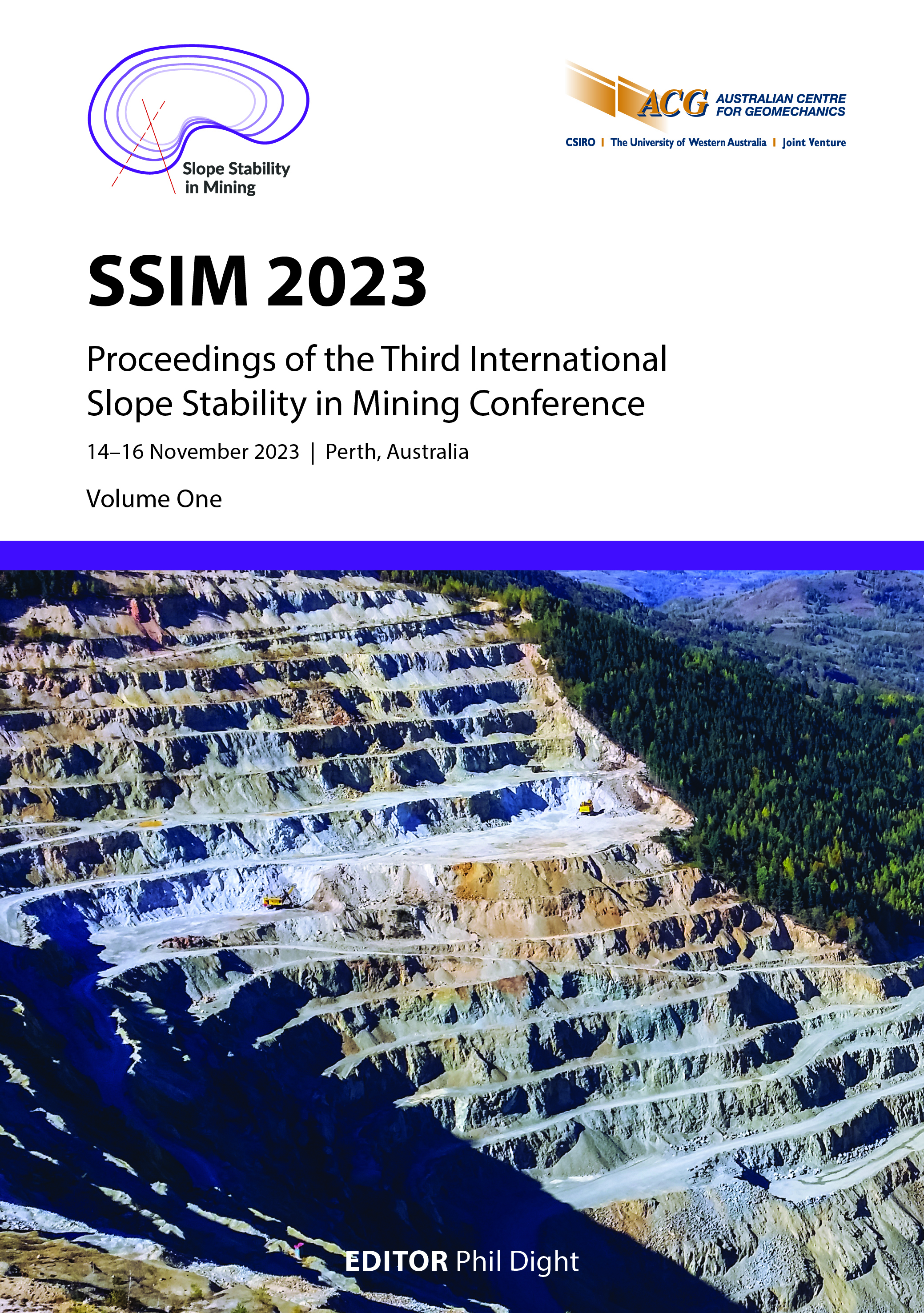Geotechnical slope design in hard rock lithium deposits

|
Authors: Weir, FM; Hemraj, D; Fowler, MJ; Watton, JW; Strang, D |
DOI https://doi.org/10.36487/ACG_repo/2335_28
Cite As:
Weir, FM, Hemraj, D, Fowler, MJ, Watton, JW & Strang, D 2023, 'Geotechnical slope design in hard rock lithium deposits', in PM Dight (ed.), SSIM 2023: Third International Slope Stability in Mining Conference, Australian Centre for Geomechanics, Perth, pp. 449-458, https://doi.org/10.36487/ACG_repo/2335_28
Abstract:
The increasing demand for commodities such as lithium is driven by the accelerating transition to a green economy. Currently, there are two primary types of lithium mines: brine and hard rock or, more specifically, pegmatite (spodumene) deposits. This paper synthesises the geotechnical controls on slope design and the associated risks for hard rock lithium deposits. Typical controls are illustrated, using specific examples from recent experience at three lithium deposits and operations in Australia and Africa. Geological models of hard rock lithium deposits comprise the pegmatite orebody and the surrounding country rocks. The orebody is typically an inclined pegmatitic intrusion, creating a footwall and hanging wall open pit setting. The country rocks vary in the degree of metamorphism of sedimentary and igneous protoliths. Weathered or transported material up to a 5–60 m depth may pose localised geotechnical risks. Fresh rock mass conditions are typically favourable with high intact strengths. This means that the structural geology is critical to geotechnical slope design. For hard rock lithium deposits, key elements of the structure model are: Orientation of pegmatite intrusions and potential shearing at the contacts with country rocks. Presence of foliation or bedding. Regional scale faults and shears. Geotechnical conditions on the hanging wall are typically favourable for slope design, while the footwall interacts with potentially unfavourable structural conditions where careful geotechnical design is required. Slope stability risks are typically bench to multi-bench scale issues. Examples of common risks, stability issues and techniques for managing them are presented in this paper.
Keywords: lithium, geotechnical slope design, pegmatite
References:
Bowell, RJ, Lagos, L, de los Hoyos, CR & Declercq, J 2010, ‘Classification and characteristics of natural lithium resources’, Elements, vol. 16, no. 4 pp. 259–264,
Bradley, DC, McCauley, AD & Stillings, LS 2010, Mineral Deposit Model for Lithium-Caesium-Tantalum Pegmatites, USGS Scientific Investigations Report 2010-5070-0.
Hetenyi, G, Taisne, B, Garel, F, Medard, E, Bosshard, S & Mattsson, HB 2012, ‘Scales of columnar jointing in igneous rocks: field measurements and controlling factors’, Bulletin of Volcanology, vol. 74, no. 2, pp. 457–482,
Huang, T, Fu, XF, Ge, LQ, Zou, FG, Hao, XF, Yang, R, Xiao, RQ & Fan, JB 2020, ‘The genesis of giant lithium pegmatite veins in Jiajika, Sichuan, China: insights from geophysical, geochemical as well as structural geology approach’, Ore Geology Reviews, vol. 124,
Küster, D, Romer, RL, Tolessa, D, Zerihun, D, Bheemalingeswara, K, Melcher, F & Oberthur, T 2009, ‘The Kenticha rare-element pegmatite, Ethiopia: internal differentiation, U-Pb age and Ta mineralization’, Mineralium Deposita, vol. 44, no. 7,
pp. 723–750.
Partington, GA 1990, ‘Environment and structural controls on the intrusion of the giant rare metal Greenbushes pegmatite, Western Australia’, Economic Geology, vol. 85, pp. 437–456.
Partington, GA 2017, ‘Greenbushes tin, tantalum and lithium deposit’, in GN Phillips (ed), Australian Ore deposits, Australian Institute of Mining and Metallurgy Monograph, Melbourne, vol. 32, pp. 339–342.
Partington, GA, McNaughton, NJ & Williams, IS 1995, ‘A review of the geology, mineralisation and geochronology of the Greenbushes pegmatite’, Economic Geology, vol. 90, no. 3, pp. 616–635.
Phelps-Barber, Z, Trench, A & Groves D 2022, ‘Recent pegmatite-hosted spodumene discoveries in Western Australia: insights for lithium exploration in Australia and globally’, Applied Earth Science, vol. 131, no. 2, pp. 100–113.
Rabbel, O, Palma, O, Mair, K, Galland, O, Spacapan, JB & Senger, K 2021, ‘Fracture networks in shale-hosted igneous intrusions: processes, distribution and implications for igneous petroleum systems’, Journal of Structural Geology, vol. 150, pp. 1–18.
Rawlings, D 2017, ‘Lithium-rich pegmatites of the Bynoe Field’, AGES 2017 Proceedings, NT Geological Survey, pp. 65–67.
Shaw, RA 2021, Global Lithium (Li) Mines, Deposits and Occurrences (November 2021), British Geological Survey.
Smith, B & Ross, J 2017, ‘Mount Marion lithium pegmatite deposit’, in GN Phillips (ed), Australian Ore Deposits, Australian Institute of Mining and Metallurgy Monograph, Melbourne, vol. 32, pp. 161–162.
Sweetapple, MT, Holmes, J, Young, J, Grigson, MW, Barnes, L & Till, S 2017, ‘Pilgangoora lithium-tantalum pegmatite deposit’, in GN Phillips (ed.), Australian Ore Deposits, vol. 32, Australian Institute of Mining and Metallurgy, Melbourne, pp. 339–342.
Sweetapple, MT & Collins, PLF 2002, ‘Genetic framework for the classification and distribution of Archean rare metal pegmatites in the North Pilbara Craton, Western Australia’, Economic Geology, vol. 97, pp. 873–895.
© Copyright 2025, Australian Centre for Geomechanics (ACG), The University of Western Australia. All rights reserved.
View copyright/legal information
Please direct any queries or error reports to repository-acg@uwa.edu.au
View copyright/legal information
Please direct any queries or error reports to repository-acg@uwa.edu.au

